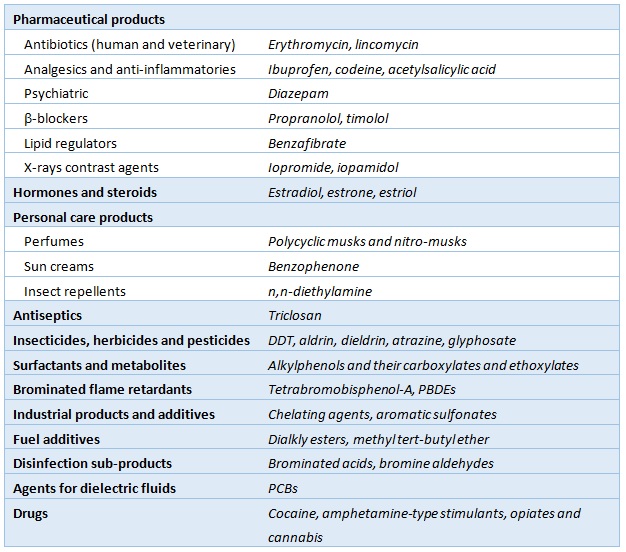Ocean conservation is one of the main environmental concerns nowadays. Ocean ecosystems have been affected and altered by human intervention. Studies show that the degradation of these ecosystems, particularly in coastal areas, has increased significantly during the second half of the 20th century and the 21st century as a result of run-off from coastal cities, industrial discharge and agricultural and livestock farming.
The pollution of ocean ecosystems stemmed from the direct discharge of domestic and industrial sewage, without any treatment. While some areas have been provided with urban waste water treatment plants, the organic and nutrient pollution has been replaced by micropollutants (also called emerging contaminants). The latter, which are characteristically found in very low concentrations (g/L, ng/L and even pg/L) – ultra-traces, are very dangerous for the environment because of their toxic, persistent and bioaccumulative nature. There are a variety of origins of these pollutants: farming (herbicides, insecticides, fertilizers etc.), urban origin (pharmaceutical, hygiene and personal care products) and industrial origin (cleaning agents, solvents, degreasers, preservatives, pigments etc.). Specifically, in the case of pharmaceutical compounds, as these have been formulated to act on living organisms, it is expected that their introduction into the ecosystems will cause alterations and effects in the medium and long term. Table I summarises the micropollutants frequently found in the environment, classified into groups based on their use. The number of different micropollutants identified continues to grow and the register of these developed in the European Union already contains more than 10 000 entries, with those in table I being the best known.
The repercussions of micropollutants on marine ecosystems are extensive and varied. Many of these substances are responsible for the genetic mutations of seabirds and fish, tumours and lesions on fish and feminisation and growth problems in various types of organisms.
The fact that the existing waste water treatment plants are not designed to eliminate micropollutants constitutes one of the most significant problems posed by these substances; the objective of the waste water filtering processes focuses on the elimination of organic and nutrient pollution, which are found in much higher concentrations. Thus, it is necessary to treat waste that is currently discharged into seas and oceans using techniques that are capable of effectively eliminating micronutrients.
Not all techniques to aid ocean conservation can be successfully used to eliminate micronutrients. Of all the treatment processes, the techniques that are most effective in the elimination of this type of pollutants are:
- Operations based on the use of membranes (ultrafiltration and nanofiltration)
- Advanced oxidation processes (catalytic ozonation and oxidation)
- Adsorption (through powdered and granular activated carbon)
Table: micropollutants frequently found in the environment


